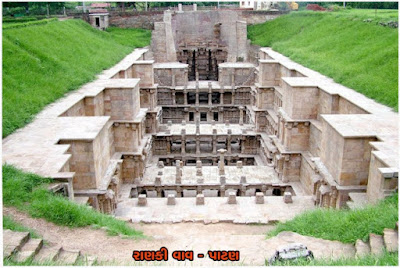Amazing video About Rani ki Vav
Rani ki Vav otherwise known as the Queen's Stepwell arranged on the banks of Saraswati River in Gujarat is one of the biggest stepwells of its sort in the nation. This 900-year old structure is situated around 125 km from Ahmedabad, in Patan, which was a braced city in bygone eras. Despite the fact that stepwells were developed in India in third BC as a methods for putting away water, Rani ki Vav is significantly more than that. It has picked up tremendous ubiquity because of its detailed seven-celebrated structure and unpredictably cut figures of divine beings, goddesses, and gods.
Adbhut video Rani ki Vav
Is it true that you are arranging an excursion to Gujarat this Christmas season? At that point keep aside daily to investigate this UNESCO World Heritage Site which is considered as a part of the must-visit end of the week excursions from Ahmedabad. We have curated all of data you should think about Rani ki Vav, for example, its set of experiences, design, timings, and other fascinating and lesser-known realities.
Area : Patan
Distance from Major Cities : Gandhinagar (110 km); Ahmedabad (125 km); Vadodara (235 km) Surat (390 km)
Timings : 8:00 am to 6:00 pm; consistently
Passage Fee : ₹ 15 for Indians; ₹ 200 for outsiders
Status : UNESCO World Heritage Site
Closest Railway Station : Mehsana Junction
Closest Airport : Ahmedabad
Authorized by : Rani Udayamati
Year of Establishment : 1063
Building Style : Maru-Gurjara style
Measurements : 64 meters (length) x 20 meters (width) x 27 meters (profundity)
Best Time to Visit : Between October to March
Rani ki Vav: History
Rani ki Vav follows its causes back to the eleventh century when the Chalukya Dynasty was in force. The mainstream supposition that will be that the very much was authorized in 1063 by Rani Udayamati for her significant other Raja Bhimdev I. An assortment of semi-chronicled Sanskrit accounts named Prabandha Chintamani, arranged in the fourteenth century, has references to the sovereign structure this commemoration for her adored spouse.
As years passed, the River Saraswati changed its course and this stepwell was widely harmed and silted by floods. Because of tedious floods and stream stores, this monstrous structure got little consideration and was nearly covered under the sand. In the last part of the 1980s, the Archeological Survey of India began unearthings on the site, desilting and reestablishing the structure to its current structure.
Rani ki Vav Architecture
Built in the Maru-Gurjara structural style, this east-bound commemoration is spread more than 12 sections of land of land. Rani ki Vav is 64 meters in length, 20 meters wide and 27 meters down, and is planned like a modified sanctuary. That is, the structure starts from the beginning with steps prompting the lower part of the profound well underneath. Notwithstanding ventures, there are strengthening flights of stairs that can be utilized to arrive at the lower stories. The draw well is arranged in the outrageous west of the structure. Obviously, Rani ki Vav shows authority of complex methods and an incredible presentation of subtleties and extent.
The well has seven stories, each including models of hypnotizing imaginative quality. You can see a blend of strict, fanciful, and common symbolisms in the 500 or more primary figures and a few minor ones. There are around 226 columns in this progression well that stay unblemished even after the tedious floods. The hallways, structures, and columns are unpredictably cut with the figures of Hindu divinities, divine beings and apsaras or heavenly artists. The cutting of Sheshashayi Vishnu, where he is viewed as leaning back on a snake with thousand hoods, is one of the vital attractions to look at.





















No comments:
Post a Comment